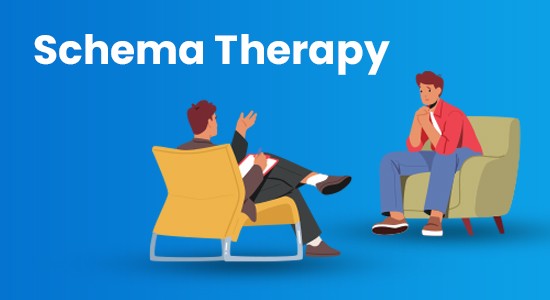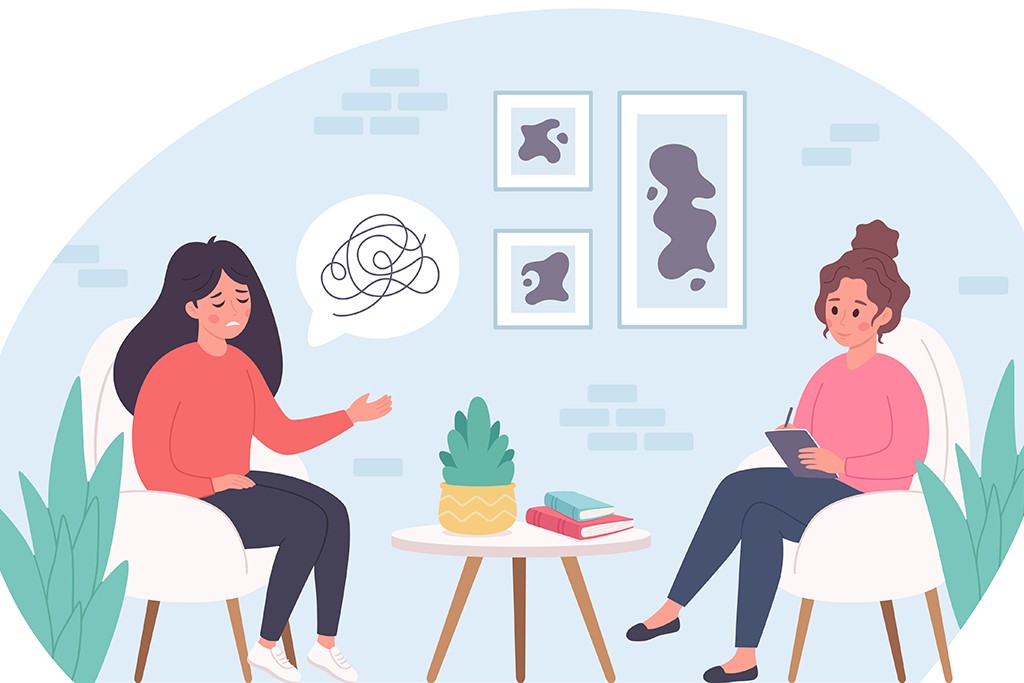Schema therapy
Schema therapy
We are shaped by a deep desire to be known, seen and recognised The more our strivings are thwarted by deprivation, neglect, trauma or loss, the more profound and painful our longings can become. We all have a fundamental need to grow, to heal and become our best “selves”. A positive, responsive and safe relationship produces chemicals and hormones, which enhance the regulation of emotions, stress and neural firing. The ability of the brain to change itself, coupled with the power of a safe therapeutic relationship, promises fulfillment. They change feelings of depression, anxiety, loneliness or general unhappiness and link us to a path towards greater peace. t’s an integrative approach that aims to treat personality disorders and other mental health concerns that don’t always respond to other treatment options. It can be particularly useful for treating borderline personality disorder.

In schema therapy, you’ll work with a therapist to uncover and understand your schemas, sometimes called early maladaptive schemas.
Schemas are unhelpful patterns that some people develop if their emotional needs aren’t met as a child.
These schemas can affect you throughout life and contribute to problematic coping methods and behaviors if they aren’t addressed.
Schema therapy aims to teach you how to ensure your emotional needs are met in a healthy way that doesn’t cause distress. Experts have identified 18 distinct schemas, but they all fall into one of five categories or domains:
- Domain I, disconnection and rejection, includes schemas that make it difficult to develop healthy relationships.
- Domain II, impaired autonomy and performance, includes schemas that make it difficult to develop a strong sense of self and function in the world as an adult.
- Domain III, impaired limits, includes schemas that affect self-control and the ability to respect boundaries and limits.
- Domain IV, other-directedness, includes schemas that lead you to prioritize the needs of others above your own.
- Domain V, overvigilance and inhibition, includes schemas that prioritize avoiding failure or mistakes through alertness, rules, and disregarding desires or emotions.
We define schemas as: “broad, pervasive themes regarding oneself and one’s relationship with others, developed during childhood and elaborated throughout one’s lifetime, and dysfunctional to a significant degree.”
Schemas develop in childhood from an interplay between the child’s innate temperament, and the child’s ongoing damaging experiences with parents, siblings, or peers.
Schemas or ‘negative life beliefs’ can lead to low self-esteem, lack of connection to others, problems expressing feelings and emotions and excessive worrying about basic safety issues. The beliefs can also create strong attraction to inappropriate partners and lead to dissatisfying careers. These Schemas or patterns consist of negative/dysfunctional thoughts and feelings which develop early in life as a result of the need for connection, autonomy, play and spontaneity, limits and assertion not being adequately met. The negative patterns are repeated and elaborated upon throughout a person’s life, and pose obstacles for accomplishing one’s goals and getting one’s needs met.
Some examples of schema beliefs are: “I’m unlovable,” “I’m a failure,” “People don’t care about me,” “I’m not important,” “Something bad is going to happen,” “People will leave me,” “I will never get my needs met,” “I will never be good enough,” etc…
These schemas are perpetuated behaviourally through the coping styles of schema maintenance, schema avoidance, and schema compensation. These coping mechanisms are known in Schema therapy as Schema modes (see list below). Schema modes are the moment to moment emotional states and coping responses that we all experience. Often our coping modes are triggered by situations to which we are oversensitive. Many of these modes lead us to overreact to situations or to act in ways which end up hurting ourselves or others. Schema Therapy is designed to address unmet needs and to help clients break these patterns of thinking, feeling and behaving, which are often tenacious, and to develop healthier alternatives to replace them.

Structured assignments are worked on outside sessions that help clients to continually confront their negative beliefs. In each session, the client works with their therapist to identify when their unhealthy patterns are repeating, and are “empathically confronted” with the reasons for change. The therapist provides a partial antidote to meeting some of the client’s needs that may not have been met in their childhood. Often cognitive behaviour is not enough , this has lead researchers to look at deeper and more permanent cognitive structure as a mean to understand and treat problem moods and behaviors. Schema therapy has been extensively researched to effectively treat a wide variety of typically treatment resistant conditions, including Borderline Personality Disorder and Narcissistic Personality Disorder. Read our summary of the latest research comparing the dramatic results of schema therapy compared to other standard models of psychotherapy.
Schema therapy is outlined in the book ‘Reinventing Your Life’, by Jeffrey Young, Ph.D. and Janet Klosko, Ph.D. (1994)


